Overview
Version
| Report Server Version | Plugin Version | Functional Change |
|---|---|---|
| 11.0 | V4.6.4 | - |
Application Scenario
Scene maps, one type of maps added to the Extended Chart of V4.0, are suitable for displaying multi-dimensional map data in multiple scenarios, as shown in the following figure.
 Note:
Note: 
You can customize multiple scenes in the map, and switch between these scenes for carousel, as shown in the following figure.

Usage Instruction
Recommended Configuration
| Hardware | Configuration |
|---|---|
| CPU | Intel(R) Core(TM) i7-10700CPU @ 2.90GHZ 2.90GHz |
| Memory | 16.0 GB |
| Graphics Card | Discrete Graphics Card GeFORCE GTX 1660 SUPER (Discrete Graphics Card) |
Notes
To use such map, you need to use the latest JSON file. Replace the map folder in %FR_HOME%\webapps\webroot\WEB-INF\assets\ with the folder decompressed from the downloanded map.zip, or just replace the world-3d.json file in %FR_HOME%\webapps\webroot\WEB-INF\assets\map\geographic if you cannot replace the map folder.
You are advised to use only one scene switchover map in a template.
You can customize geographic information, but cannot customize image maps.
The effect cannot be previewed on mobile terminals.
You cannot preview the map in real timeduring remote design.
The scene map is suitable to be displayed separately on large screens on.
For details about how to set a scene map in FVS, see Scene Map in FVS.
Function Description
The following uses a general report as an example to describe the basic functions and operation methods of a scene map.
Scene Setting Entry
Merge and select required cells, click the Insert Chart icon on the upper toolbar, and insert a scene switchover map, as shown in the following figure.

Scene Setting Page
Complete the scene map design on the scene setting page, mainly including adjusting the map perspective, binding data to the map, and setting the map style.

Perspective Adjustment
In the real-time map preview window, hold down the left mouse button and drag the map to adjust the rotation perspective; hold down the right mouse button and drag the map to change the position. You can scroll the mouse wheel to zoom in/out on the map, as shown in the following figure.

Perspective Saving
After you adjust the perspective, click Save as Initial Perspective to fix the custom perspective as Initial Perspective. In such case, the coordinates of the initial perspective on the right will also change accordingly.
During the adjustment, you can click Back to Initial Perspective to restore to the last-saved initial perspective, as shown in the following figure.

Scene Setting
Double-click the name of a scene (only one scene by default) to change it to another name, and press Enter to confirm the setting, as shown in the following figure.

You can click  to add a scene. When there are more than one scene, you can click
to add a scene. When there are more than one scene, you can click  , set Switchover Method to Button or Carousel, and configure Hyperlink Trigger, as shown in the following figure.
, set Switchover Method to Button or Carousel, and configure Hyperlink Trigger, as shown in the following figure.

Status Setting
1. Map Boundary
You can set Map Boundary in Status on the map attribute panel, as shown in the following figure.

2. Auto Model Simplification
If you select the world map for scene display, the complexity of the world map model and the impact of terminal configuration will lead to a poor display performance.
To solve this problem, the Auto Model Simplification function (enabled by default) is added for the scene switchover map in the Extended Chart plugin of V4.2. After this function is enabled, the map will be automatically optimized according to the complexity of the current map (based on the number of latitude and longitude points) to improve the display performance.

Data Binding
During the data binding, the setting items in Point, Line, Column, and Area are different. You can select Map or Drill Map as Map Type in Area, as shown in the following figure.

Style Setting
The style setting includes Graph and Background.
1. Graph
Color Style specifies the map theme color, which can be set to Blue or Cyan. You need to set styles for four graphics repsectively, as shown in the following figure.

2 Background
Six built-in special effects are available for the map background. You can enable/disable those effects as required, as shown in the following figure.

Special Effect Adding
1. Monitor Refresh
You can enable the background detection to refresh the map data in real time.

2. Carousel
You can enable the graphic carousel to switch graphics in a carousel way and in the form of a single data point. You can set the carousel interval, and enable/disable the hyperlink trigger.
 Note:
Note: 
3. Hyperlink
You can add a hyperlink to a graphic to achieve the redirection effect when you click the graphic.
If a drill effect is set in a scene switchover map, you can add a hyperlink for the drilling directory in the upper left. Then you can click the drilling directory for redirection.

Taking the linkage of the drill map to other components as an example, you can click the graphic or the drill directory of the map to link other components.
Notes
Extended Chart Initialization Failure
The Extended Chart plugin of 4.0 and later versions depends on the two JAR packages whose names start with jxbrowser in %FR_HOME%\lib, as shown in the following figure.
If the two JAR packages are missing, an error message indicating that the extended chart initialization fails is displayed after you install the plugin.

If the two JAR packages are missing in your designer installation directory, you need to download the JAR packages based on your own system, decompress them, and copy and paste them to %FR_HOME%\lib.
For Windows 32-bit users, download Win32 JAR.
For Windows 64-bit users, download Win64 JAR.
For macOS users, download mac JAR.
Scene Map Drill Event DisabledFailure
Problem Description
When other components are superimposed over the scene map in an FRM report, the click event in the scene map cannot be triggered beacuse of the superimposement from the components. For example,the map cannote be drilled down, or cannot be redirected to the previous level after drilling.
Solution
You are advised to place the components superimposed over the scene map in a tab block or an absolute layout block, and add a After Initialization event to the tab block or the absolute layout block to disable the Click event of the components. For example:
 Note:
Note: setTimeout(function()
{document.querySelector('[widgetname="ABSOLUTE0"]').style.pointerEvents = "none";}
, 2000); // ABSOLUTE0 is the name of the component in the absolute layout block, which needs to be modified according to the actual situation, as shown in the following figure.








